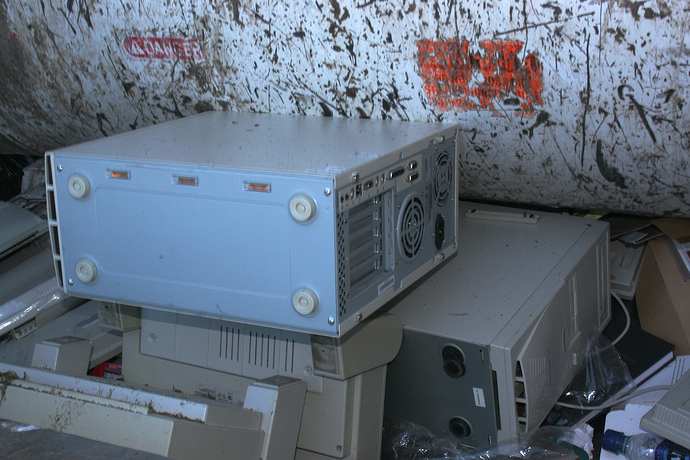Thrift stores. Then your stuff can live in someone else’s closet, or even get used again. Old hardware has the advantage of being much more reparable than modern hardware, so it’s worth letting it have a chance to keep doing something.
There are a reasonable number of people who crave old hardware for use, fixing, spare parts, repurposing, or just to try to figure out what the danged thing is. Most of them haunt thrift stores. I have a friend who’s one of them, which means that I don’t have to do any old-stuff shopping myself. About half of my old hardware came indirectly from goodwill which is one of the unknown/broken hardware friendly thrifts, at least in the puget sound area. Some was working at purchase, some my friend fixed first. It’s not all perfect, e.g. my old laptop batteries don’t hold a charge and new replacements aren’t available. But chargers, cables, adapters, peripherals and other odds and ends are also readily available and you can help keep that flow going.
You do want to make sure that any drives are wiped or removed, because many or most buyers will snoop, and that ‘dead’ hard drive may not really be dead.
Working old hardware can have many modern uses. iTunes 10 on a 2006 mini for a cloudless no-grief music server; 2010 Mac Pro for folding@home during the heating season; 2011 mini as a dedicated Aperture machine; luxo lamp imac and 12" titanium powerbook for ppc tiger and classic (strategic conquest & berkeley logo); internal and external file servers; laptop with a dead motherboard converted to a raspberry pi laptop (a coworker, not me (yet))…
All of the mac desktops running Tiger and newer can handle screen sharing without a fuss, so you don’t need monitors for them. Many pre-tiger systems can run vnc if you install software for it. You do need one monitor for troubleshooting or to build a system, but size and quality don’t matter if you’re mostly going to be screen sharing.


